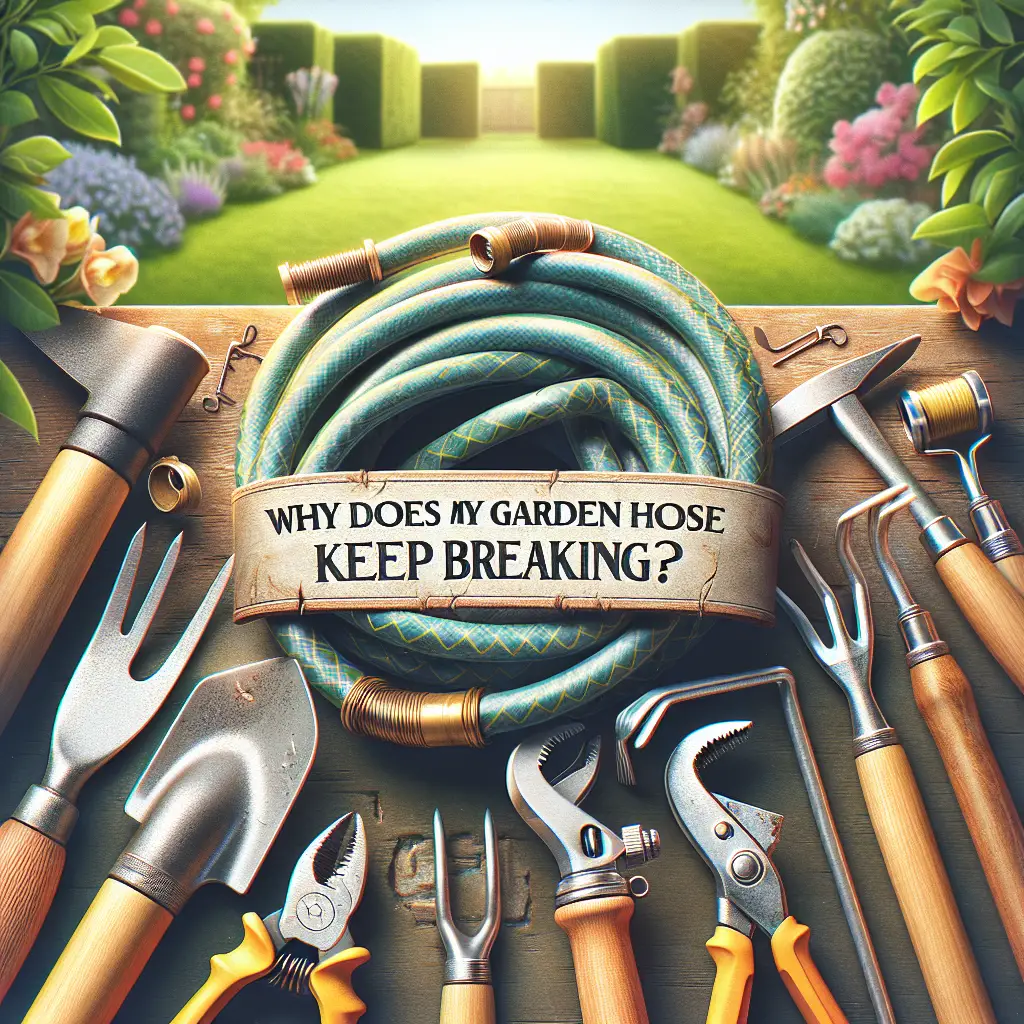Why Does My Garden Hose Keep Breaking?
Picture this: It’s a warm sunny day, and you’re looking forward to spending some quality time nurturing your garden. You grab your trusty garden hose, turn the water on, and then—disappointment. Your hose has sprung another leak, or worse, it’s burst entirely. Sound familiar? In this post, we’ll explore the common reasons behind garden hose failures and offer tips to ensure your watering tool stands the test of time.
Inferior Hose Construction – The Root Cause of Most Issues
In the world of garden hoses, you truly get what you pay for. Your hose might be breaking because it’s not built to last. Cheap materials can degrade quickly under the sun’s harsh UV rays, or they may not be able to withstand the wear and tear of regular use.
Tip: Choose a hose made with heavy-duty materials. Hoses like the Forever Steel Hose provide durability with a lightweight design, resisting punctures, and kinks.
Excessive Water Pressure – The Hidden Culprit
Water pressure that’s too high for your hose to handle is a common, yet often overlooked issue. Rapid or frequent pressure changes can wear out your hose, eventually causing it to fail.
Solution: Install a water pressure regulator at your spigot to maintain a steady flow. The Rain Bird Hose Pressure Regulator is an affordable tool that can prolong the life of your garden hose.
The Kink in the Plan – Hose Kinking and Bending
Kinks and sharp bends can weaken your hose over time, creating weak points where breaks can occur. Continually straightening out these kinks is not only frustrating but can shorten the lifespan of your hose significantly.
Prevention: Opt for a kink-resistant hose, like those made with reinforced mesh layers or go for a coiled hose design which is less prone to tangling.
Weather Woes – Temperature Extremes Can Damage Hoses
Your garden hose is also vulnerable to temperature extremes. Cold weather can make some materials brittle and more likely to crack, while hot temperatures can contribute to the degradation of the hose.
Best Practice: Store your hose during extreme weather conditions. Keeping your hose out of direct sunlight when not in use will also help, as recommended by the University of California’s Division of Agriculture and Natural Resources.
Connector Complications – Fittings Can Fail
Standard plastic or thin metal connectors may not be able to withstand the daily stress of connecting and disconnecting your hose. If these fittings fail, your entire hose is compromised.
Upgrade: Look for a hose with brass or other heavy-duty metal fittings, which are less prone to cracking and leaking. Checking hose fitting reviews is also advisable, with sites like Consumer Reports offering credible feedback.
Practical Practices – Additional Tips to Extend the Life of Your Garden Hose
- Store Properly: Invest in a hose reel or hanger, to keep your hose off the ground and neatly coiled when not in use.
- Regular Inspections: Check for signs of wear and tear regularly, particularly around the fittings and any spots that lie on hard surfaces.
- Proper Use: Avoid dragging your hose over sharp objects and edges which can result in nicks or punctures.
- Mind the Temperature: Drain your hose before the first frost and do not leave it filled with water in freezing temperatures.
- Repair Early: Small leaks can often be fixed with a hose repair kit, which is cost-effective and can extend the life of your hose.
In conclusion, a broken garden hose is not just a nuisance; it can also be a symptom of larger issues such as poor quality, high water pressure, or improper maintenance. By understanding the root causes of hose breakage and implementing the solutions provided, you can prevent the inconvenience of frequent replacements and enjoy a beautiful, well-watered garden all season long.
Remember, taking care of your garden hose is just as important as taking care of the plants it waters. So, next time you’re faced with a hose issue, refer back to this guide for troubleshooting tips and tricks to keep your garden hose in full flow.
Now, put these tips into action and keep your garden lush and thriving. Happy gardening!


